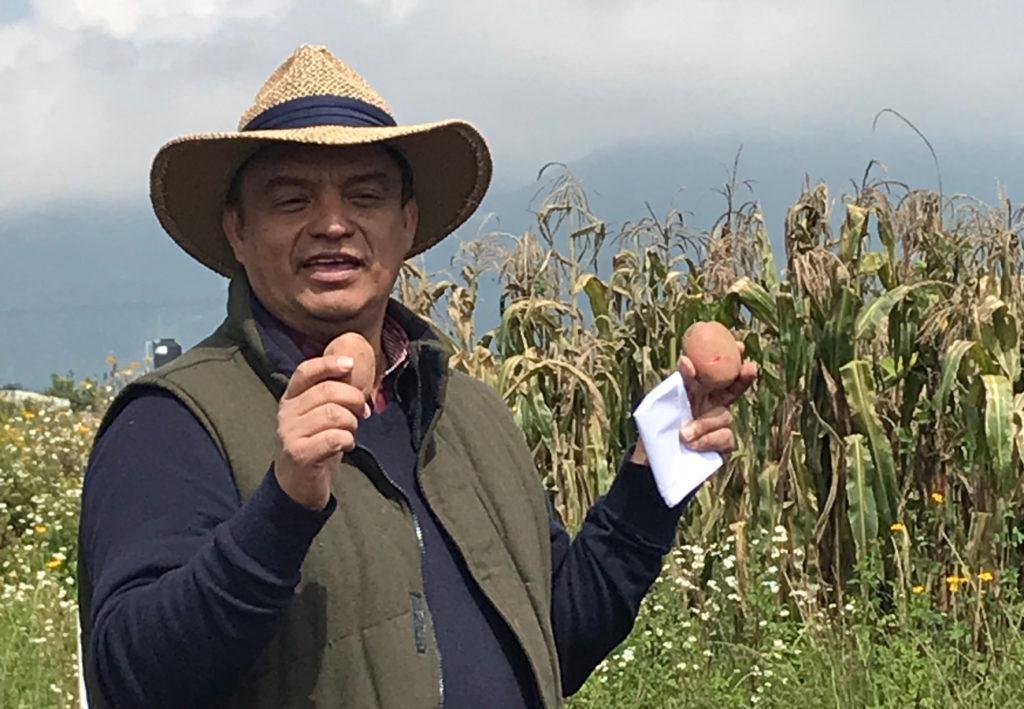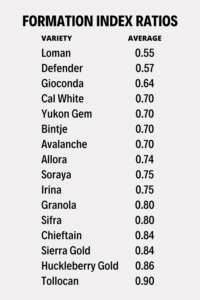
Guatemalan potato growers seek oblong alternatives to Loman
Guatemala might be called the “The Land of the Eternal Spring” by the tourist industry thanks to its cool, pleasant temperatures and soft rain. The potato industry, however, might want to call the Central American nation “The Land of Oblong Potatoes.
Guatemala produces over 540,000 metric tons (MT) of tablestock and export potatoes that go primarily to neighboring El Salvador, which produces very few potatoes of its own. On average, residents of Guatemala (population 17 million) and El Salvador (just more than six million), consume 50 pounds of potatoes per year. That’s fewer potatoes total than U.S. residents, but still more than the 33 pounds per year of fresh potatoes the average American consumes.
Although Guatemala has a majority of indigenous peoples, in contrast to Peru, about 80% of their potatoes are a variety called Loman. (Even Russet Burbank has only an 18% market share in the U.S.)
Loman, a Dutch variety released in 1932, was introduced to Guatemala most likely in the late 1950s. Loman has great virus resistance, good yields, but has no late blight resistance. Because Guatemala is the Land of Eternal Spring, late blight is a dominant disease, as cool, wet weather is optimal for late blight. Loman requires heavy spraying of fungicides to produce a crop. If no fungicides were used with Loman, there would be no harvest.
Loman has been grown in Guatemala with very little renewal from certified seed potatoes. Use of certified seed potatoes in Guatemala is less than 1%. Yields have started to decline, and many growers will now plant about 40 cwt per acre instead of 20 cwt per acre to make up for the decline in yields.
Osman Cifuentes, from the Guatemalan Institute of Science and Agricultural Technology (ICTA), has been working for a quarter-century to find alternatives to Loman. Working with Cifuentes, Potatoes USA began sending U.S. varieties for trials in 2016.
Change comes slowly in Guatemala, as there are over 70,000 potato producers in the country, which averages to less than three-quarters an acre per producer.
Oblong tubers top want list
How much do Guatemalans love their Loman potatoes? Well, the market is a good place for an unsentimental view. The Guatemalan Ministry of Agriculture, Cattle and Food (MAGA) publishes weekly prices from the Terminal Market in Guatemala City at their website. This is the wholesale market for most produce found in the country.
As of Oct. 15, 2019, the price of washed Loman was $23.87/$20.00/$12.90 for large/medium/small sized tubers per cwt, using the exchange rate of 7.75 Quetzales to $1. For washed round tubers, the price was $15.40 for large size. (MAGA does not include medium or small sizes for round potatoes, as not many are sold.) Large Loman tubers sold for 1.55 times the price of round white potatoes the week of Oct. 17, 2019 ($23.87/$15.40). There is a smaller — and thus far untrackable — price drop for other varieties that are not as oblong as Loman. That is how Loman maintains its dominant market share in Guatemala.
When Cifuentes was a grad student, he grew the round white variety Tollocan. After harvest, he took a pickup truck full of Tollocans to open markets, only to find that vendors wouldn’t even take his potatoes for free. Slightly offended, he then tried to donate to the hospital, which also passed on the round potatoes. Guatemala is a country of limited resources and many hungry people, however, those people don’t have enough purchasing power to affect market prices. The people that do are willing to pay 50% more for oblong potatoes, like Loman, versus round ones.

Guatemalan growers keep a close eye on how oblong tubers are using the Formation Index, which is the greatest width divided by the greatest length of a tuber.
Table 1 (right) represents the Formation Index of tubers averaged for the varieties in six locations harvested in 2016. The average ratio is summarized in the right column. A perfectly round tuber rates at 1.00. A tuber twice as long as it is wide scores 0.50.
Yield numbers also are considered by growers, but with such a strong market preference for oblong tubers, even yield is not as important as the formation index.
One of Loman’s defining traits is that even tubers that stay on the small side are still oblong. The price of the small oblong Lomans are the same as the large round tubers of Tollocan.
Requesting Defender
Defender seems to have a similar characteristic as Loman of small tubers maintaining an oblong shape. As noted, even small oblong tubers get a good price in Guatemala. In addition, Defender has a very smooth oblong shape with few knobs and deformities, whereas Loman can get quite a few deformities as it gets larger.
Cal White tubers are quite oblong, but not as much as Loman.
Guatemalan potato producers have asked for a container of Defender seed potatoes to plant in 2019. It has very good yields, cooks well and, above all, has a nice oblong shape.
Guatemalan growers are also interested in Jacqueline Lee, another oblong potato with late blight resistance, as well as Lamoka for chipping.
Defender, with its excellent late blight resistance, may wind up as a low-chemical, high-yield alternative to Loman.
Top photo: Osman Cifuentes explaining different varieties at the ICTA harvest in September 2019.







